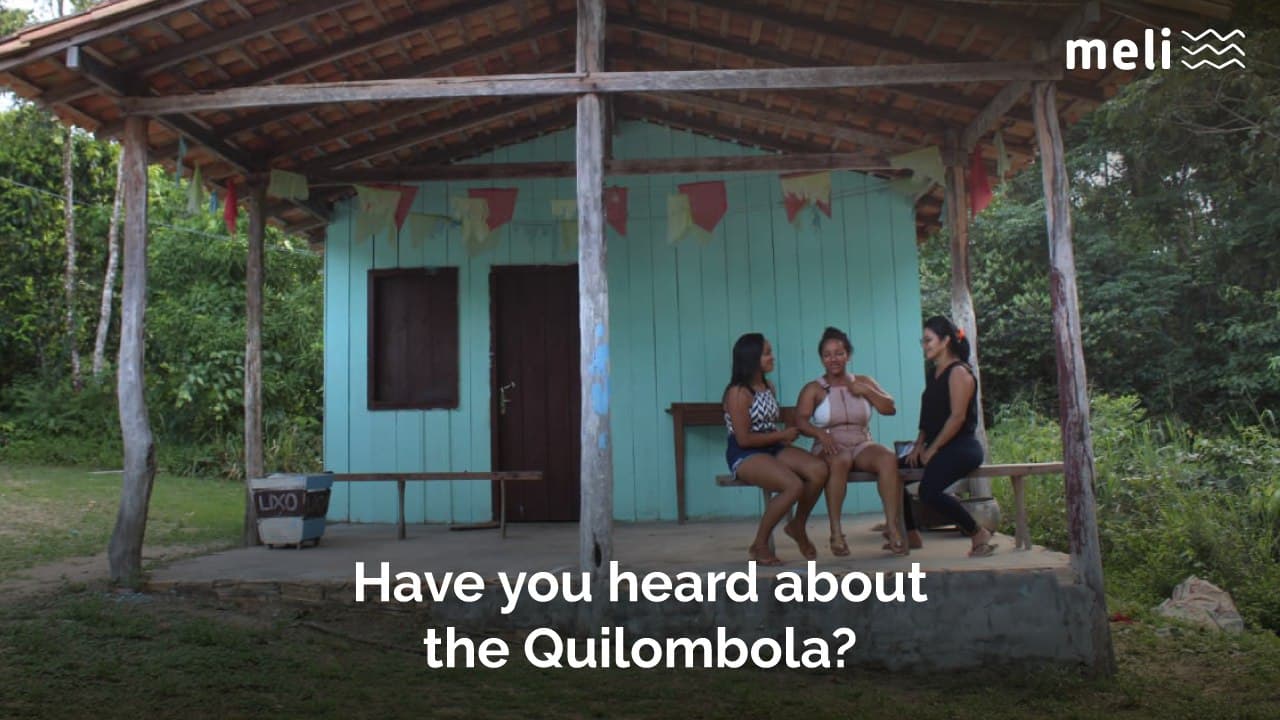Learn about the communities that have Resistance as the base of their history.
Author: Ana Rosa
Leia em português. Auf deutsch lesen.
The Brazilian Amazon is inhabited by about 30 million people, including almost 1 million Quilombolas. Within the rich diversity of traditional communities, the remaining Quilombos, or Remaining Quilombola communities, deserve special prominence in the Brazilian historical context. They were formed by descendants of abducted and enslaved Africans who managed to escape and establish their own autonomous settlements, all over the interior of Brazil, including in the Amazon region.
The word originates from languages spoken by the Bantu people, who inhabit the region of Angola, but only in Brazil has it gained the sense of traditional autonomous communities. Some of the quilombola communities, even though they have already been certified as such by the Brazilian government, prefer to define themselves in other ways, such as: Black lands, holy lands, rural Black community or, even, by the name of the community itself (Gorutubanos, Kalunga , Negros do Riacho, etc.).
These communities were a key point for the preservation of the culture related to the African diaspora in Brazil and even today they represent strong points of resistance and fight for rights. Because they had a need to adapt to difficult to access and sometimes hostile regions, these groups have a great connection with the environment that surrounds them – the Amazon being fundamental to the way of life of these and other traditional communities, all of them interacting strongly with each other.
In this context, Meli’s current activities are focused on two states in the North and Northeast of Brazil, which coincide to be among the four states with the largest number of quilombos registered in Brazil: Maranhão (846) and Pará (264), out of a total of 3,467 communities mapped by the Palmares Cultural Foundation, from the federal government. It is important to remember that there are still a large number of communities to be mapped, with sources claiming that the number of remaining communities may reach 5,000.
Although the vast majority of quilombola communities are located in the countryside, there are also quilombos in urban and peri-urban areas. Some of these communities were even present at the birth of cities, as in the case of the current Cabelo Seco neighborhood, in the city of Marabá, in Pará.
It is necessary to recognize the complex and diverse reality of these communities, to value their memory and to recognize the historical debt that the Brazilian State owes to the Black population.
Your donation can impact the world positively!
Subscribe to receive our Newsletter!
Find us also at Linkedin, Facebook, Twitter
or Instagram
www.meli-bees.org
❤️


5 Replies to “Have you heard about the Quilombola?”